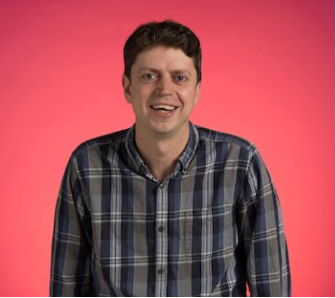TV is dead. Long live TV.
As we get ready for another Christmas break a lot of us will look forward to the comfort of our sofa, some mince pies and watching a bit of TV. There’s so much choice on streaming services with amazing shows to binge watch over the Christmas holidays it can seem like good old broadcast TV can be a bit forgotten. And if everyone is watching Neflix (or Prime, Disney, Apple TV) is normal TV dead? But is that really true or are people still watching broadcast (or linear) TV? And if they are, who exactly is watching it and how is advertising working for charities on TV at the moment?
We set out to answer these questions in our recent DTV Insight & Inspiration session DRTV fundraising reinvented - thriving in the new TV landscape. We were joined by Zoe Harkness from Thinkbox the experts on TV advertising to share the latest on who is watching TV. DTV’s Sara Sha’ath shared 4 examples of charities adapting to the new landscape with a range of creative propositions to appeal to different audiences. And Chris Clarke our Head of Media gave an overview on TV media and new advances in technology including the growth in Broadcast Video on Demand advertising and the use of QR codes.
You can view the session here.
And here are 5 main take outs from it:
1.
Broadcast TV is still more popular than streaming for the general public. Thinkbox’s research this year contrasted people who work in marketing with the general public. This was a useful reminder in the differences between these 2 groups. 99% of people in marketing watch subscription VOD like Netflix, while its 72% for the general public. And for linear TV 83% of the general public watch it compared to 76% of marketing people. People also spend more time watching broadcast TV. On average people watch TV for 3 hours 37 mins per day and 80% of this is broadcast TV with the rest spit between subscription VOD, DVD and YouTube. For 45+ age group its 91% on broadcast TV. Device watching (e.g. Smartphones) is on average 1 hour 26 mins per day.
2.
TV Is the best media for driving emotion. When asked which media channel they were most likely to find advertising that makes them laugh, feel emotional and that they like, the majority of people selected TV. This makes sense given we tend to be watching on huge HD flat screens with quality surround sound and this immersive experience is likely to generate a more emotional response than other media.
3.
To make TV work you need to speak your audiences language. in the current TV landscape there’s a raft of different ways to engage with your audience – not just the more traditional regular giving asks. These are led by what we know about the audiences themselves. A lot of this is about identity - your potential donor’s interests, values, desires, moral outlook… Sara shared 4 examples, one of which was Breast Cancer Now’s Legacy advert. This poignant advert had a proposition that spoke not only to women and girls but also to anyone who has a female in their life that they care about.
Breast Cancer Now’s Legacy advert
4.
TV is cheaper than other media. You can reach large audiences through a cheaper cost per thousand than for example on Meta. Linear TV is still the most cost-effective broadcast medium.
5.
But there are also opportunities on Broadcaster Video on Demand (BVOD). BVOD costs have fallen, audiences grown and tracking improved. This trend is set to continue. We’re seeing strong performance on BVOD for several campaigns - it’s definitely an opportunity to reach new audiences.
So to sum up, people are still watching more broadcast TV than any other service. Its offering charities the chance to use multiple propositions to drive deep emotional connections with a range of audiences to generate really strong donor acquisition volumes. And its still the cheapest way of reaching this broad audience. So as opposed to TV being dead its thriving… and there are lots of opportunities to make the most of this new landscape. Long live TV!
Bio
Alex Wordsworth is Senior Strategic Planner at DTV. He has helped create successful DRTV and digital campaigns for many causes around the world.


